A new name was given to the Chevrolet series, and the Bel Air name was used for the premium model range. Chevrolet introduced two lower series; the 150 and 210 which succeeded the Special and Deluxe series respectively. The 1953 Chevrolet was entirely restyled making it new with restyled body panels, front and rear ends although their engineering and frame were similar to the 1949-52 Chevrolets. This model year Bel-Air got a facelift A design for a post-war car. The technology applied for the pre-war cars was entirely phased out; the torque tube drive, six-cylinder feed engines, the knee-action suspension, and the traditional split windshields. They made the final styling of the new Chevrolet passenger car. The Bel Air had a wide molding chrome strip that ran from the rear fender to the rear bumper. The stripe had a similar color painted on the inside to that of the outside body with the words Bel Air scripted inside the strip. The lower models had no model identity on the cars but had a Chevy crest on the hood and trunk.
The 1953 model year was the first year of a single-piece windshield. Bel Airs had an optional big chrome strip along the lower part of the dashboard with a deluxe Bel Air steering wheel and a complete chrome horn ring. The Bel Air standard equipment was surrounded by a carpet and full wheel covers. A few changes were made in 1954 on the Bel Air. It had a revised grille and taillights, and a renewed engine with insert bearings and greater oil pressure, necessary for the full-flow oil filtration system which was introduced in 1954. Previously the 235 and 216 cubic inch-six-cylinder engines comprised of Babbit bearings and scoops which would create pressure at the bottom of each rod making the oil pressure standard at 15-30 PSI.
